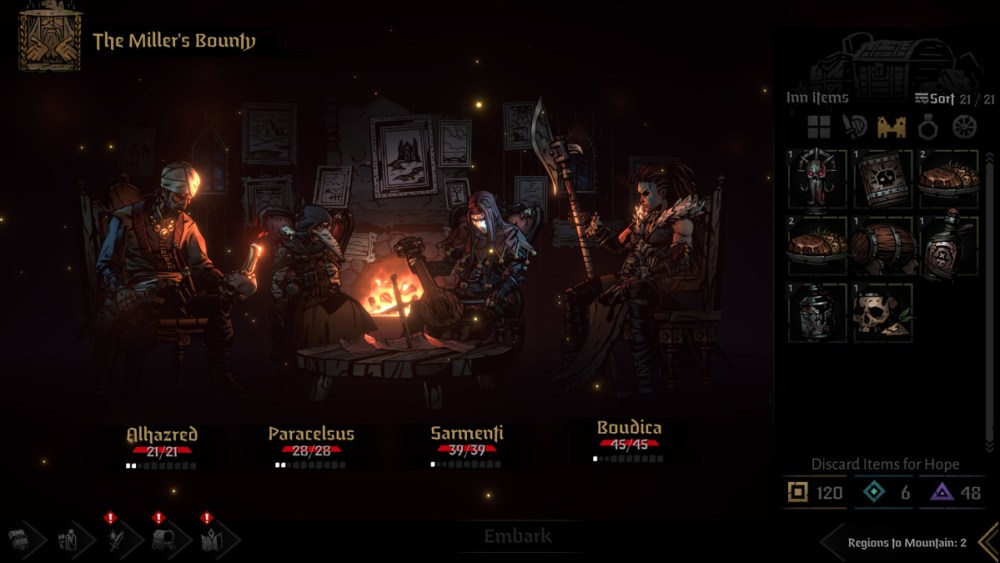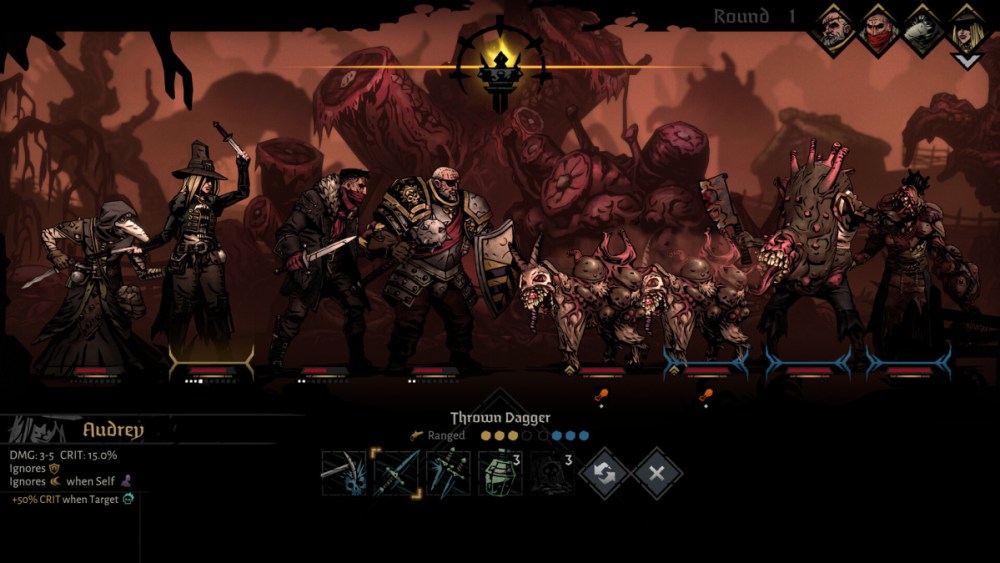Darkest Dungeon II on PC
To say Darkest Dungeon II can be a brutally punishing game would be an understatement.
On more than one occasion, I saw promising runs ground to a halt thanks to unfortunate critical hits from enemies and less than ideal abilities assigned to my party. A matter of minutes saw runs go from being the best I’d ever had to the worst I’d ever seen, and what could have been a triumphant trouncing of a boss turned into a torturous exercise in going down with the ship alongside the party members I’d led into untimely deaths.
It’s the epitome of a game that revels in pitting players against overwhelming odds. And yet, this also made overcoming the challenges the game presents that much more gratifying, and established Red Hook Studios‘ latest offering as one of the most rewarding roguelike games I’ve played in a long time.

Part of this is thanks to how Darkest Dungeon II builds upon what came before it. Similar to the first title in the series, the sequel centers around a group of troubled souls who are drawn into a mission to eliminate an eldritch force that threatens humanity. Unlike the original Darkest Dungeon though, this entry sees the forces of darkness let loose on civilization, decimating and corrupting the wider world.
As a result, the party of unlikely heroes must travel the world, fighting horrors as they go and struggling to maintain their sanity in the face of increasingly monstrous obstacles. All the while, bits and pieces of information are revealed regarding how this occurred, and what awaits those who will remain once the dust settles.
It’s a dire enough setup, and provides an excuse for some of the gameplay mechanics that have been implemented since the first game’s release. Most of these display themselves in the form of quality-of-life improvements, which serve to make the sequel feel like a huge step up in terms of ease of access and playability.
Case in point: Players now navigate linear maps and areas via a carriage which allows one’s party to traverse the game’s maps more quickly. Players can still choose where they go and what they’ll experience to an extent, but there’s no longer an option or need to go back and forth around a cramped area in order to complete missions. Players can also still fall victim to hazards and threats just as the party from the original did, but with far less resource management, backtracking, and general stress.

Alongside this were improvements ranging from more readily accessible party member types instead of randomly recruitable characters, and the elimination of the hunger mechanic altogether. Though these might seem like small features to newcomers, they end up radically changing the game and honing in on the challenge presented by the game’s combat.
Speaking of which, the battles in Darkest Dungeon II are where the title truly shines. Though it might seem like standard fare for a turn-based take on fights, the system is deceptively deep with a slew of stats, ailments, and buffs to keep track of. Failing to do so can quickly spell the difference between a successful run and one doomed to fail. There’s also factors like a party member’s positioning, and whether or not they have the damage-dealing potential needed for a given encounter.
Early on, I found myself constantly flattened by Occult enemies which seemed insurmountable due to the damage they dealt and the ailments they hit my party members with. After doing some experimenting though, I found that they could be easily dispatched by blinding, poisoning, or burning them accordingly, and then moving specific classes into position to inflict the maximum amount of damage. Before long, they ranked among the foes I could dispatch even with fairly underdeveloped party members.
Adding to this are a slew of auxiliary mechanics which serve to further influence one’s chances of survival. These include returning features like equipping Trinkets with special effects or properly treating the party during their brief respites at Inns, as well as dealing with the different traits assigned to characters which strengthen and debilitate characters in equal measure.
Alongside these are new elements such as segments which flesh out the backstories of characters in order to unlock new abilities for them, and relationships between characters that form based on their actions in combat. Utilizing them properly can prove just as pivotal in how well one’s run goes, and are worth figuring out sooner rather than later.
